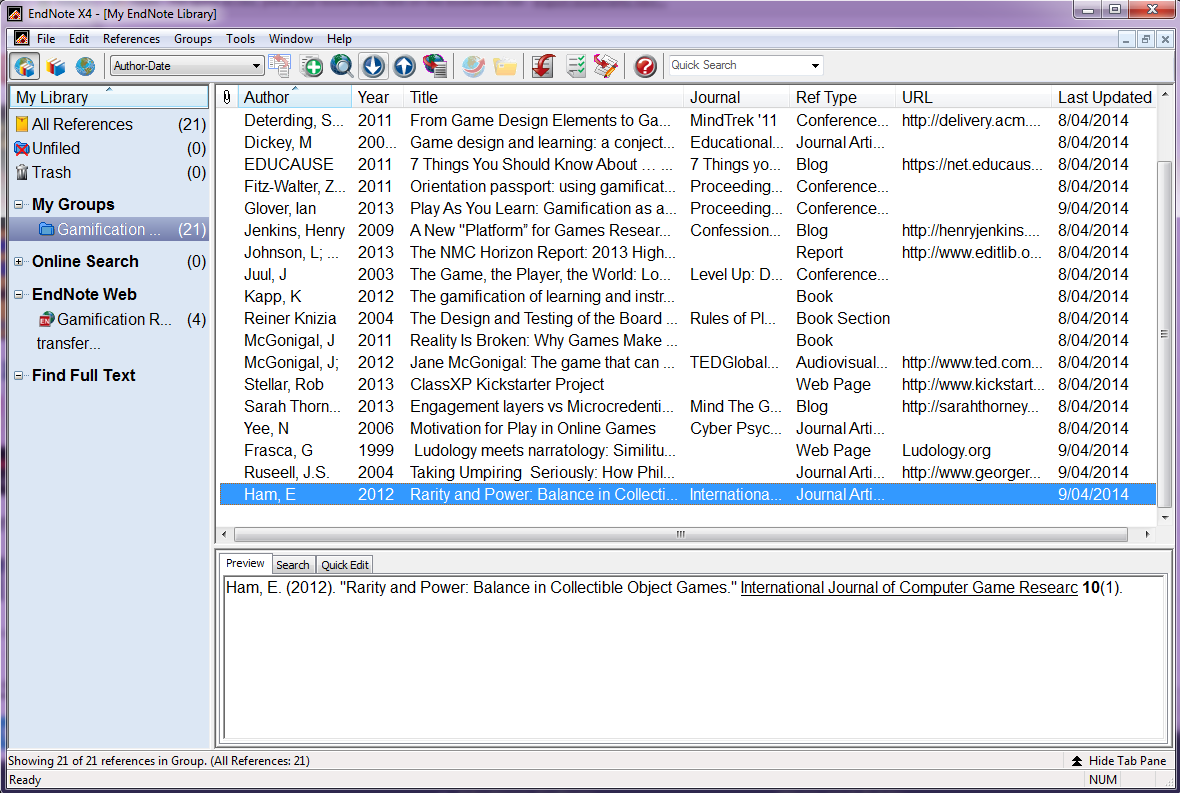Hunicke, LeBlanc and Zubek (2004) present a framework for developing games and thinking about games research. They start from the perspective of the player and the designer as a one way communication into a product, the game.
They formalize the consumption of games to into their components, rules, system and fun. Which they extrapolate their design components.
MECHANICS > DYNAMICS > AESTHETICS
Mechanics describes the particular components of the game, at the level of data representation and algorithms.
Dynamics describes the run-time behavior of the mechanics acting on player inputs and each others outputs over time.
Aesthetics describes the desirable emotional responses evoked in the player, when she interacts with the game system.
The authors then talk about language around fun, and how the vocabulary for “fun” is very limited. Then launch briefly into a “fun” taxonomy.
1. Sensation - Game as sense-pleasure
2. Fantasy - Game as make-believe
3. Narrative - Game as drama
4. Challenge - Game as obstacle course
5. Fellowship - Game as social framework
6. Discovery - Game as uncharted territory
7. Expression - Game as self-discovery
8. Submission - Game as pastime
This is interesting, and possibly useful. However how does this fit with other taxomonies? Does this cover everything one considers fun. What about other interpretations of fun? This taxonomy is Marc LeBlanc’s (author) eight kinds of fun (http://8kindsoffun.com/). Other ways of defining of categorizing fun is Nicole Lazzaro’s Four ways of fun (link). No doubt there are also some commentary from the fields of psychology.
The authors then move onto explaining the model. They feel it best to start from the user perspective, with aesthetics. This idea of starting the game design process from the user experience point of view is not new and shared by many designers (including Kevin Werbach, Gamification Design Framework). The model is very simple and the about definitions of the steps give most of it away. However, here are some choice quotes for each step that may be of use.
Aesthetics
“They succeed when the various teams or players in these games are emotionally invested in defeating each other.” Touching on emotional investment for engaged play.
Dynamics
[Between winners and losers] “As the gap widens, only a few (and sometimes only one) of the players is really invested. Dramatic tension and agency are lost.”
Mechanics
“By applying … changes to the fundamental rules of play, we might be able to keep lagging players competitive and interested for longer periods of time.”
They conclude that simple changes to games can result in a better user experience. “In addition, by understanding how formal decisions about gameplay impact the end user experience, we are able to better decompose that experience, and use it to fuel new designs, research and criticism respectively.”
References
Hunicke, R., M. LeBlanc, et al. (2004). MDA: A formal approach to game design and game research. Proceedings of the AAAI Workshop on Challenges in Game AI.



Gamification in Higher Ed Briefly
Sarah Moore shares her experience with an LMS development company and her thoughts on gamification and higher education. Her important points are the benefits gamification can have to many facets of a students development including;
While some of the commenters on this blog post raise concerns around overexposure to technology, the impacts of over stimulating audiences, and whose responsibility it is to create the gamified experience.